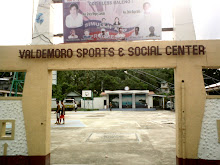DURING THE SPANISH OCCUPATION
The old town Da-an na Lungsod was small, hilly and rocky. The absence of adequate water supply made it difficult for the people to live. Its limited size could not accommodate the growing population. About the beginning of the nineteenth century therefore, the town was moved to the present site. Peopled mainly by hardy and sturdy farmers, the new town grew up to a prosperous community. The people cleared and cultivated the lands and planted rice, corn, coconuts, palms, abaca, and root crops. Sooner, more crops than were needed by the populace were produced. They needed to be disposed somewhere. Fortunately, inter-island traders who visited the place brought the surplus products, sold or bartered clothes, utensils, trinkets and other household articles.

From this traders news spread far and wide that Baleno was rich in agricultural products. For this reasons and because of its geographical location, Baleno was often the subject of moro raids and banditry. So frequent were these moro raids that the people built walls around the old town for protection. Favorite story, still the current among the town folks is about one of these moro raids. Once, some moro pirates landed stealthily on the shores old town. When they were seen by the natives, the entire people took refuge in the church.
The moros besieged the town for several days. There was shortage of water in the town and no water could be secured elsewhere. A few more days, many people would have died of thirst. The priest told the people to pray and say the rosary in honor of the patron saint of the town, “Virgin del Pillar”. And a miracle ensued! Through the intercession of the Virgin, a gush of fresh water sprung forth at the foot of one of the church’s posts, and the whole town was saved.
Foremost of the later events that was destined to play a greater role upon the cultural life of the town of Baleno, was the construction of the church by Fr. Flaviano Incino some time in the year 1870. This church which was made of stones and bricks lasted until 1948 when it is partially demolished, reconstructed and patterned after modern churches.
It was Fr. Flaviano Incino, a saintly priest, who organized the first society of the Sacred Heart of Jesus. This religious society has persisted up to the present time and has helped cement the faith of Catholicism among the inhabitants of Baleno. Through the wisdom and guidance of the priest and other priests that followed him, Baleno has remained the unshakeable bulwark of roman catholic faith.
The year 1896 brought to this shore a notable figure Fr. Pedro Chavez. He was not only a religious thinker, but also a versatile man-a farmer, a politician, and an educator. He taught the natives scientific methods of farming and of controlling diseases. He was then one of the most learned men I the island of Masbate. He was instrumental in the rapid advancement of the town of Baleno.
During the Philippine revolution, Mariano Regio de Dios, Ananias Diokno and Pedro Aguinaldo, all revolutionary leaders, visited Baleno, Juanillo Relova, Manuel Paez and Ferro Spanish residents, fled to Capiz. Later, a provisional government with Ciriaco Dela Rosa as the first appointed president of town, was created.

2 comments:
from whom or what documents do you derive juanillo relova?
I am looking for documentation or photo of Juanillo Relova. I am a grandson of Petra Relova (daughter of Juanillo).
Post a Comment